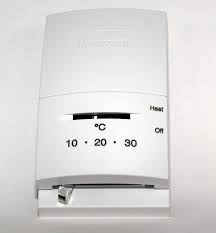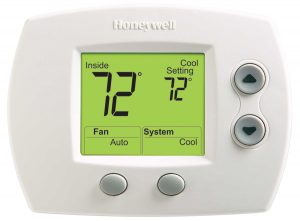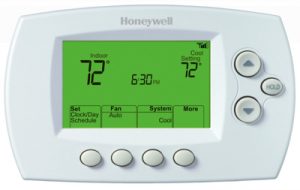People often underestimate the importance of an accurate and well positioned thermostat in a heating and air conditioning system.
Although a rather inexpensive component its importance is the systems overall operation is massive.
Older type slide thermostats are very inaccurate but also very dangerous as they use a liquid mercury blub as a switching contact.
Liquid Mercury is a hazardous chemical which will damage the central nervous system, kidneys and liver.
If you have a thermostat that resembles the image below you should have it upgraded immediately and disposed of professionally.

Consider upgrading to an electronic thermostat like the Honeywell PRO5000 and PRO6000 below
 |  |
Tips for perfect thermostat placement
Not in sunlight or near heat emitting devices:
If the thermostat is mounted in a location in direct sunlight or near a heat emitting device like a television, this radiant heat will influence the sensor in the thermostat to register a temperature much higher than room temperature. This will affect system operation in both summer and winter. Causing the system to incorrectly switch on the heating or cooling when not required and lead to crazy fluctuations in room temperature.
Away from Air Drafts:
When a thermostat is near windows or doors that allow drafts in from outside, it will also begin to pick up this outside temperature and attempt to regulate room temperature to suit these false conditions. Near the center of the house: A thermostat placed in the distant reaches of a home will not pick up representative temperatures. These outlier readings will cause the thermostat to control the temperature so it provides uneven comfort.
Correct Wall Height placement:
Don’t install a thermostat 2.5 meters up the wall or behind a curtain just to hide it. The thermostat must be at a height and location relevant to the occupants. After all the thermostat is an indicator of the temperature you are feeling. We suggest a location at eye level for ease of operation and centrally located in the house, usually near the return air vent.
![]()


Recent Comments